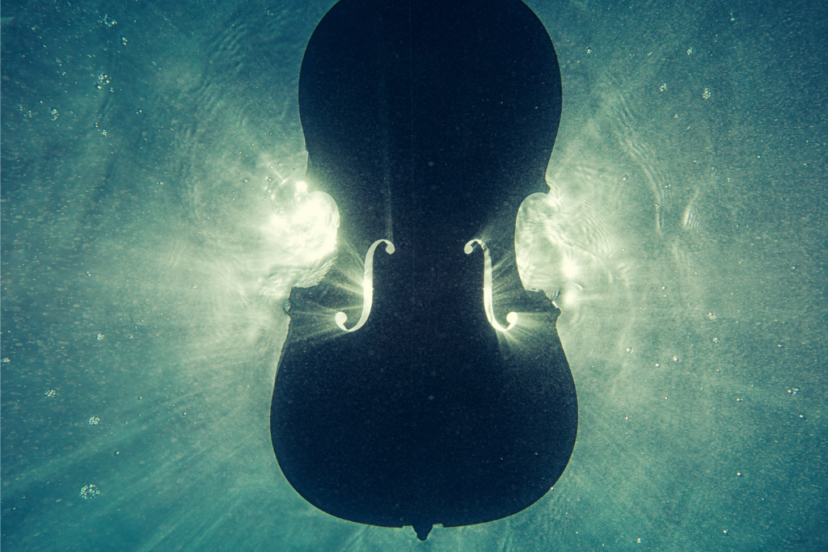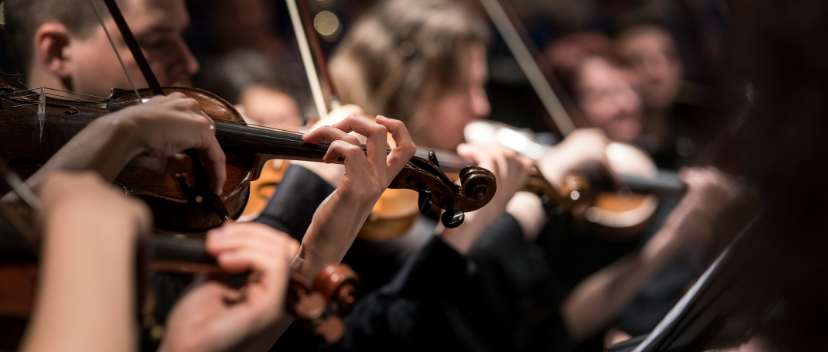There's a certain magic in the sound of a harmonica. From blues to pop music, this…
Exploring the Different Types of Violin

When we think of the different types of violin, a classic image often comes to mind – a beautifully crafted wooden instrument with four strings, played with a bow and producing a sound that can stir the soul.
But did you know there are many different types of violin, with each of these string instruments having its unique characteristics and sound?
Let’s take a journey through the world of violins, from the baroque violin to the modern acoustic violin, and explore their different features and uses.
Different Types of Violin
The violin is a stringed musical instrument that belongs to the family of bowed string instruments, including both acoustic and electric violins.
The Baroque Violin: A Blast from the Past
The baroque violin is a relic from the past, an echo of the times when classical music was in its prime. These instruments, with their gut strings and traditional baroque bow, were the precursors to our modern violins. They have a less forceful yet more resonant sound due to their thicker bass bar. Unlike the standard violin, they lack a chin rest, a feature added in the modern era for comfort.
The Classical Violin: The Standard Bearer
When people talk about a ‘normal violin,’ they’re usually referring to the classical violin. This is the most common type among the violin family and is typically what one learns to play first. Known for its versatility, classical violins are at home in a wide range of musical genres, from classical music to folk music. Strung with synthetic strings, they produce a sound that’s both rich and warm.
The Electric Violin: Plugged In and Ready to Rock
If the baroque violin is the wise elder and the classical violin the versatile professional, then the electric violin is the rebellious teenager of the violin family. With their ability to produce sound electronically, electric violins have found a home in genres like rock music. Unlike their acoustic siblings, they don’t rely on a sound box to amplify their sound. Instead, they use electronic pickups to capture the vibration of the strings and convert them into an electrical signal, which can then be amplified for a louder sound.
The Stroh Violin: A Unique Sonic Experience
The Stroh violin, or horn violin, is a unique member of the violin family. It was designed to produce a more directional sound, making it louder and better suited for recording in the early 20th century. Instead of a traditional wooden body, Stroh violins use a metal resonator and horn, making it look more like a brass instrument than a stringed one.
The Five-String Violin: An Extra Dimension
A standard violin has four strings: G, D, A, and E. Five-string violins add another layer of complexity to violin playing. They have a fifth string, typically tuned to a lower C, which extends the range of the instrument from the E string down. This extra string allows violinists to explore new musical territories, often blurring the line between the violin and its larger sibling, the viola.
The Modern Acoustic Violin: Tradition Meets Innovation
The modern violin maintains the traditional shape and materials of the classical violin but incorporates innovations that enhance playability and sound. For example, some modern violins use steel strings for a brighter tone and greater durability. Others might have a more pronounced bass bar for better resonance.
The Silent Violin: Practice Makes Perfect
Silent violins, also known as practice violins, are a godsend for anyone who needs to practice without disturbing others. These instruments produce very little sound acoustically, but when hooked up to headphones, they allow the player to hear themselves clearly.
The Tenor Violin: a Versatile Option
Similar to the five-string violin, the tenor violin also has an extra string. However, instead of adding a lower string, the tenor violin adds another higher string tuned to C or D. This creates a unique sound and allows for more flexibility in playing different keys. The tenor violin can be used as both a solo instrument and in orchestral settings, making it a versatile option for violinists.
The Mezzo Violin: The Perfect Size
Smaller than a standard violin but larger than a half-size violin, the mezzo violin is perfect for young students who have outgrown their beginner’s instrument. It offers a comfortable size for playing and produces a tone that lies between a full-sized and half-sized instrument.
The Quarter-Size Violin: For Little Hands
The smallest of all violins, the quarter-size violin is the perfect starting point for young children interested in learning to play the instrument. Its small size makes it easier for little hands to handle and encourages proper playing technique from an early age.
The Romanian Horn Violin: A Rare Gem
The Romanian horn violin is a rare and unique instrument that originated in Transylvania. It features a wooden body with two large horns on either side, giving it a distinct look and sound. This violin is typically used in traditional folk music from the region, making it a prized possession for musicians seeking to play authentic music.
The Viola d’amore: A Violin with Extra Strings and Resonance
The viola d’amore is a violin-like instrument with additional sympathetic strings under the main strings. These extra strings give the instrument a unique resonant sound, adding depth and warmth to its tone. The viola d’amore has been around since the 1700s and was popularized in baroque music, but it can also be found in modern compositions.
The Fiddle: A Violin in Disguise?
Is a fiddle a type of violin? In essence, yes. The term ‘fiddle’ is often used to refer to violins played in folk music. The techniques and styles used in fiddle music might differ from classical violin playing, but at the end of the day, a fiddle and a violin are the same instrument.
The Viola da Gamba: a Distant Cousin
The viola da gamba, or simply the gamba, is not quite a violin but deserves mention here. It’s a bowed string instrument from the baroque era, with six strings and frets like a guitar. While it looks similar to the cello, it’s played between the legs rather than rested on the ground. It produces a softer and more mellow sound than its cousin, making it popular for solo performances.

FAQs: Different Types of Violin
What is the difference between a traditional violin and an electric violin?
A traditional violin is an acoustic instrument that produces sound through the vibration of its strings and soundbox, while an electric violin produces sound electronically. However, both types of violin are still played the same way.
What are acoustic electric violins?
Acoustic-electric violins are instruments that have both acoustic and electric capabilities. An acoustic electric violin can be played acoustically, producing a traditional violin sound, or plugged into an amplifier for a louder, more dynamic sound.
Semi acoustic violins have a hollow body and can also be played acoustically or plugged in. However, unlike electric violins, the sound produced is not fully electronic but is enhanced by pickups and preamps.
A semi electric violin is a hybrid of an acoustic and electric violin. It has a traditional wooden body but also features electronic pickups for amplification.
What is the difference between a violin and a double bass?
The modern double bass is a larger instrument with lower tones and has four strings tuned to E1, A1, D2, and G2, while a violin is smaller with higher tones and has four or more strings tuned to higher notes.
What is a chin rest on a violin?
A chin rest is a small piece of equipment that rests on the bottom of a violin, near the tailpiece. It helps to hold the instrument steady while playing.
What are violin tuning pegs, and how do they work?
The tuning pegs on a violin are small, wooden pegs that are inserted in the pegbox of the instrument. The pegs are used to tune the five strings of the violin, by adjusting the string tension. Players need to twist the pegs, moving them inwards or outwards, in order to increase or decrease the tension. This will make the string pitch higher or lower and align it with the other strings.
What are some examples of pre-Baroque stringed instruments?
Examples of pre-Baroque stringed instruments include the viola da gamba and the Hardanger fiddle.
Who are some famous violin makers?
Some famous violin makers include Antonio Stradivari, Guarneri del Gesu, and Jacob Stainer.
What are the different bowing techniques used in playing the violin?
Some common bowing techniques used in playing the violin include détaché, staccato, legato, spiccato, and martelé.
Summary: Types of Violin
And there you have it, a whirlwind tour of the wonderful world of violins. From the gut strings of baroque violins to the electric pickups of electric violins, from the lower C string of five-string violins to the silent practice of silent violins, each variation of this stringed instrument has its unique characteristics and role to play in the rich tapestry of music, with more variation than most other stringed instruments.
So next time you listen to a piece of violin music, take a moment to appreciate the diversity and versatility of this incredible family of instruments.



